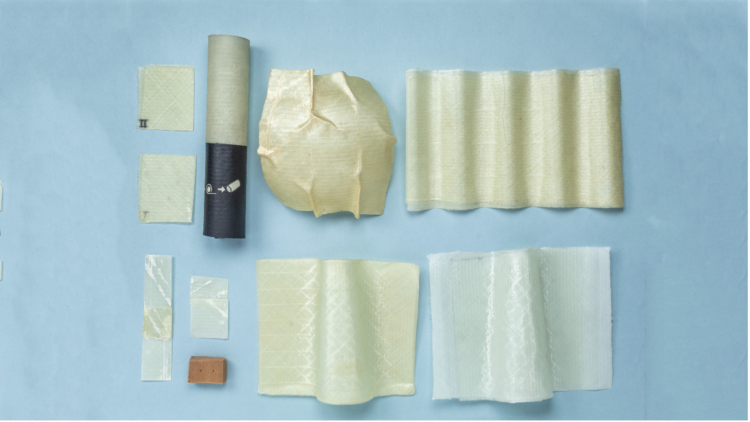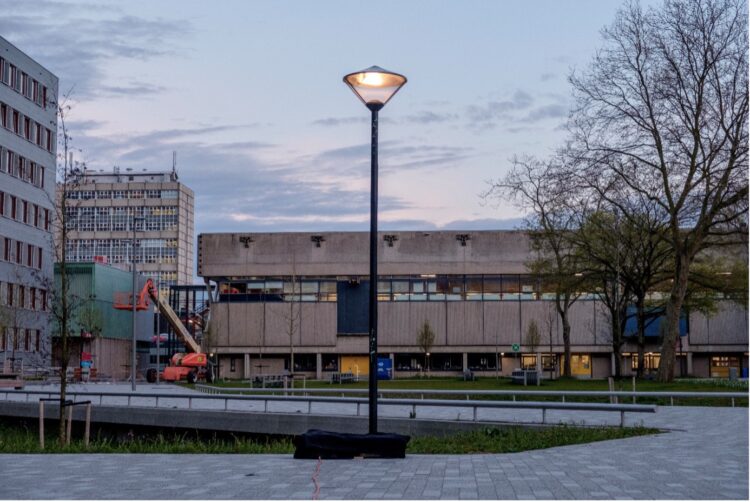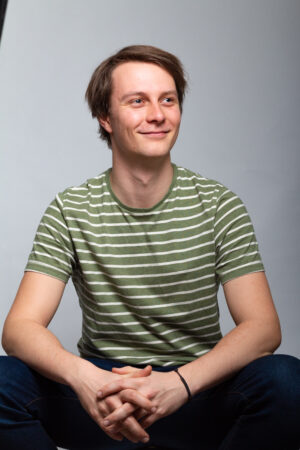From blade to post: reshaping wind turbine blade material
Sep 2022 - ongoing
By: Brans, Karel
July 4, 2023

Wind turbine blade waste
Wind turbines play an important role in the search for green energy and the circular economy. However, their blades pose a challenge in terms of material (re)usage. This is because current material in wind turbine blades (e.g. glass fiber and thermoset polymers) makes the blades hard to reuse or recycle. It is estimated that by 2050 the global turbine blade waste stream will reach over 2 million Tons, annually [1].
Most innovations around wind turbines at their end-of-life focus on shredding the composite material. The chopped fibers are retrieved and can be reused in less demanding applications like bike saddles, chairs, and car interior parts as the reduced fibre length and random orientation limit the mechanical properties. Even for thermoplastic composite materials, which are perfectly suitable for reshaping, shredding is the preferred approach. The wind industry is investigating the use of thermoplastics instead of thermosets for various reasons. One reason could be the possibility to keep the material integrity (fiber length, direction etc.) intact by reshaping blade waste with heat. However, this was yet to be demonstrated, hence my graduation project.
Structural reuse through reshaping

The goal of the project was to explore how to reshape the thermoplastic composites of wind turbines, finding a valuable reuse application and demonstrate this application with a physical model. By making a demonstrator model, the possibilities of the material can be showcased to the industry, inspire designers, engineers, and governmental agencies to investigate the currently unexplored circular end of life strategy of reusing discarded materials through reshaping.

The lamppost
I reshaped various samples of simulated thermoplastic blade waste to learn about the extent I could shape them and when, how much and how to apply heat and pressure. After getting a ‘feeling’ for the material, I was ready to design the reuse application. I ended up with the lamppost after an atypical ideation phase designing from the material strengths, weaknesses, and context. This lamppost showcases the forming possibilities in a practical, regulated, and relatively high-volume application that is recognizable and draws attention. The value of using wind turbine material in a lamppost is showcased using the strength and stiffness of the material. Illuminating a pattern on the post showcases the translucent nature of the material and makes the design more attractive thus using the material value to its full potential. Now it was time to start making the 3.5m high lamppost!
The post sections were made by quickly heating the material to approximately 130-140°C before rolling it onto a metal tube. It almost sounds as easy as it is! A cover on top of the luminaire was made using a vacuum bag. This revealed a limitation because the wind turbine material could not be formed into the slightest double-curved surface without creases forming. Based on insights gained during the project, I drew up recommendations for optimizing the initial design of a turbine blade for structural reuse through reshaping.

Impact of the project
One of my goals with the project was to inspire people to develop other applications for the thermoplastic wind turbine material. After my graduation, I immediately took the story of the project to Europe’s biggest composite fair (JEC). While discussing the project with large multinationals, I realized the biggest impact of the project was showcasing that wind turbine material can be reused in a meaningful application that does not involve shredding and is still not limited by the blade geometry.
Of course, this project has many limitations and recommendations owing to its explorative nature. If you are interested in combining the circular economy with composite materials, please contact me on either:
Interested in Learning more?

Karel Brans
You can view Karel’s thesis here
Karel.p.j.brans@gmail.com or on LinkedIn
Supervisory Team
Dr. Ruud Balkenende
Dr. Jelle Joustra